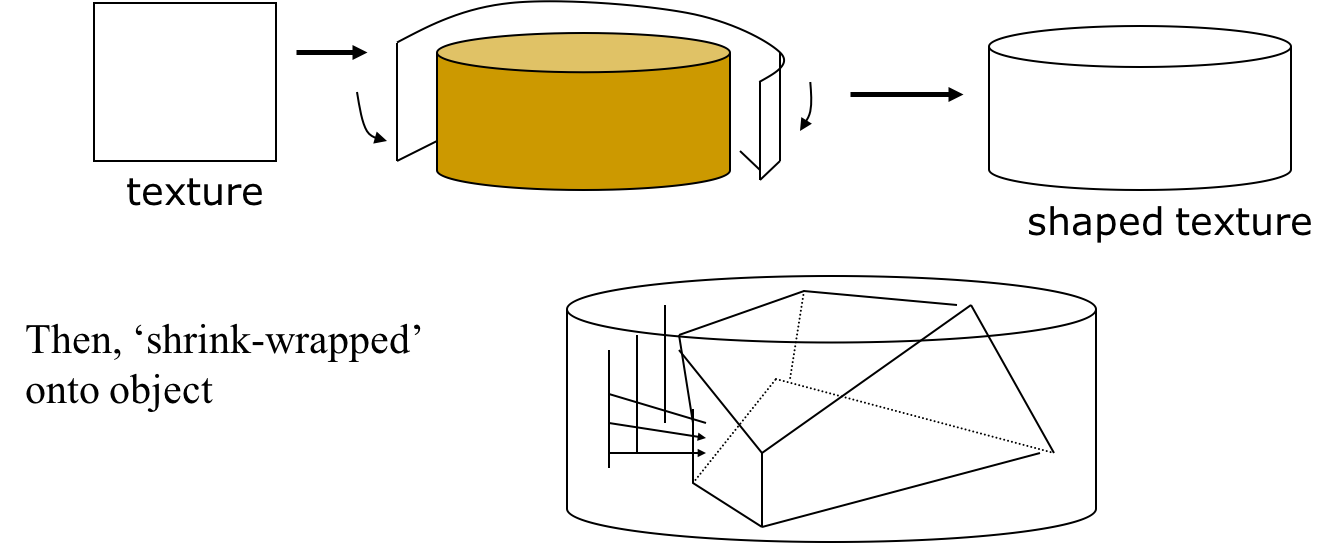4.1. Texturing¶
Texturing or texture mapping is extremely important for realism.
Simply it is attaching a picture to a polygon. It can give the impression of materials, like wood or granite.
Each point of the image is called a “texel” in analogy to pixels, and the image coordinates range from (0, 0) (bottom-left) to (1, 1) (top-right).
4.1.1. Multi-texturing¶
Can bind textures to different OpenGL texture elements. Each also needs a separate texture sampler, for example:
glActiveTexture(GL_TEXTURE0) # This is for the first texture element
glBindTexture(GL_TEXTURE_2D, textureID0)
glBindSampler(GL_TEXTURE0, textureSamplerID0)
glActiveTexture(GL_TEXTURE1) # This is for the second texture element
glBindTexture(GL_TEXTURE_2D, textureID1) # And here we bind to it the texture with id textureID1
glBindSampler(GL_TEXTURE1, textureSamplerID1)
Then, the fragment shader code could look something like this:
in vec4 fcolour;
in vec2 ftexcoord;
out vec4 outputColor;
layout(binding = 0) uniform sampler2D tex1;
layout(binding = 1) uniform sampler2D tex2;
void main()
{
vec4 texcolour1 = texture(tex1, ftexcoord);
vec4 texcolour2 = texture(tex2, ftexcoord);
outputColor = fcolour * (texcolour1 * texcolour2);
}
4.1.2. Anti-aliasing textures (mipmapping)¶
Mipmapping is creating or providing the same texture at different resolutions, for use when the texture is rendered at a distance.
For example, the same texture could be provided (or calculated) at 64x64, 32x32, 16x16, 8x8, 4x4, 2x2, and 1x1.
4.1.3. Mapping textures to surfaces¶
Distortion often results, especially if mapping to a sphere, for example.
For simple polygons, mapping the texture can be very simple: just define texture coordinates for each vertex.
For more complicated shapes things can get tricky. Something we can do is shrink-wrap mapping:
